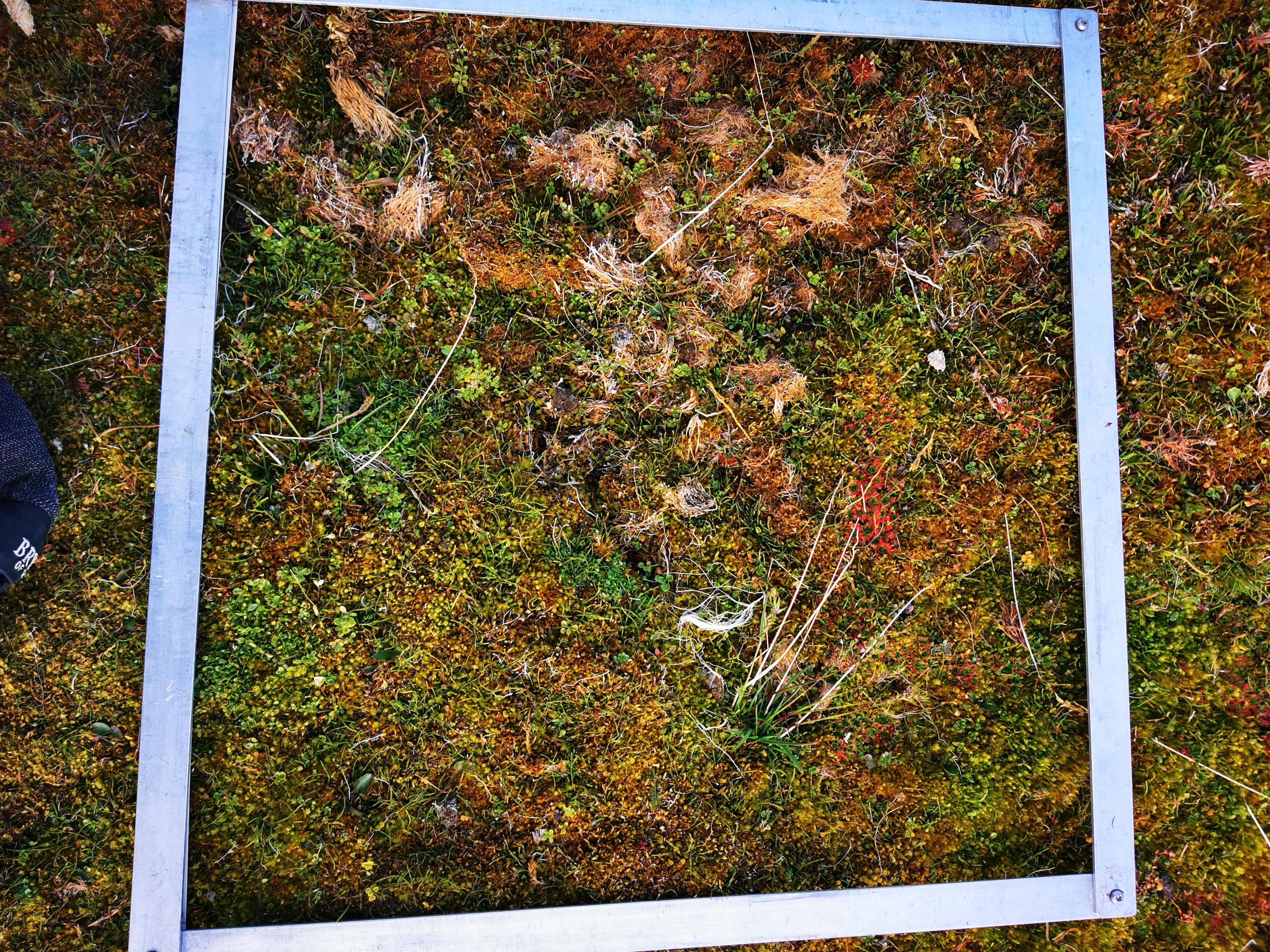Tundra vegetation in Svalbard is monitored by field measurements and drone and satellite-based remote sensing imagery. In this study, COAT researchers investigated how the remote-sensed vegetation index, NDVI, relates to field-based plant biomass and goose grubbing disturbances. The researchers found differences in the relationships between vegetation index and field-based biomass between habitat types but were surprised to find that annual summer temperatures did not exhibit a clear relationship with vegetation index values. They also showed that the spatial scale and type of remote sensing tools used influence the patterns that can be detected on the ground.
Fieldwork in Adventdalen in Svalbard. Photo: Ingrid Paulsen
Vegetation proxies derived from remote-sensed images are important tools for studying Arctic vegetation patterns and changes. The vegetation index, the Normalized Difference Vegetation Index (NDVI), is the most used proxy for plant biomass. Still, more knowledge is needed about how NDVI relates to plant biomass and herbivore disturbances, especially in sparsely vegetated areas in the High Arctic.
In this study, we investigated the relationships between NDVI and vascular plant biomass, summer temperature, goose grubbing disturbance, and winter damage in Svalbard. The data were collected during five summers across three different study areas in mountain avens ridge and in moss tundra habitats. We analysed the relationships at two spatial resolutions and two spatial extents using NDVI data derived from drone and Sentinel-2 satellite imagery.

One of our plots where we observed goose grubbing. Photo: Ingrid Paulsen
We found that higher field-based vascular plant biomass corresponded to higher drone NDVI for mountain avens ridge and moss tundra from the plots. Higher vascular plant biomass was related to higher NDVI from Sentinel-2 in moss tundra sites, but not in mountain avens ridge sites. Despite record-warm summers, temperature was not associated with NDVI during the five study years in either plot or site. In moss tundra, severe goose grubbing had a negative relationship with drone NDVI in plots, but not with the satellite measured NDVI. In mountain avens ridge habitat, winter damage showed no clear correspondence with NDVI at neither plot nor site for drone or satellite measured NDVI.
Our study confirms that NDVI relates to vascular plant biomass also in the High Arctic sparsely vegetated tundra. Moreover, we provide an example of context dependencies, highlighted in remote-sensing literature in the Arctic, encouraging future studies to include effects of herbivore disturbance on NDVI to establish habitat-specific relationships.
Read full-text article